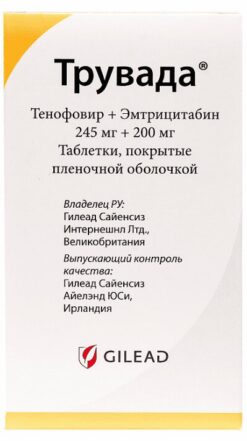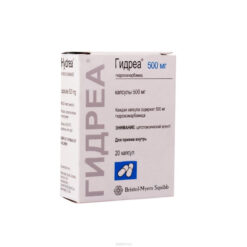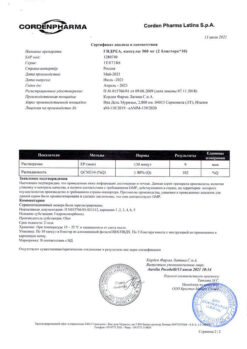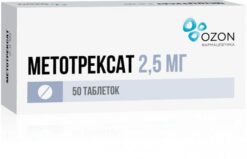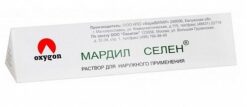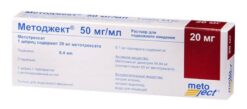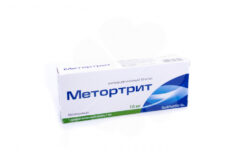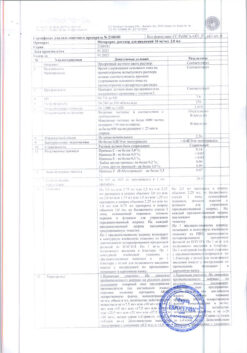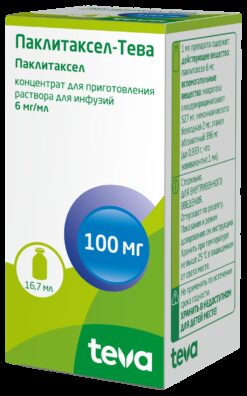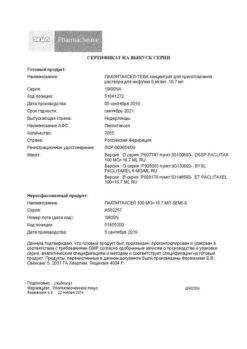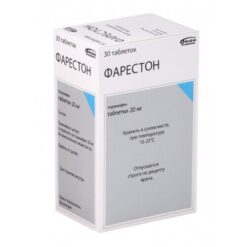No products in the cart.
Description
Pharmacotherapeutic group
Antitumor drugs, monoclonal antibodies
ATX code
/strong>
L01FX07
Pharmacological properties
Pharmacodynamics
/p>
Mechanism of Action
Blinatumomab is a bispecific T cell activator ‑and is a molecule that selectively binds to the CD19 antigen expressed on the surface of B cells ‑and the CD3 antigen expressed on the surface of T cells‑. ‑Blinatumomab activates endogenous T cells ‑by binding the CD3 ‑T cell ‑receptor ‑complex ‑(TCR) to CD19 on benign and malignant T cells‑. ‑The anti-tumor activity of blinatumomab does not depend on the presence of Tlymphocytes ‑with specific TKRs and peptide antigens on the surface of tumor cells, but is polyclonal in nature and independent of the type of human leukocyte antigen (HLA) molecules on the target cells. Blinatumomab-mediated cytolytic synapse formation ‑between ‑the T cell ‑and the tumor cell results in the release of proteolytic enzymes that destroy target cells in both the proliferation and quiescent stages. Blinatumomab transiently activates expression of cell adhesion molecules, production of cytolytic proteins, release of inflammatory cytokines and T cell proliferation ‑and leads to elimination of CD19+ cells.
Pharmacodynamic effects
Stable immune pharmacodynamic responses were observed in patients in the studies. During continuous intravenous infusion for 4 weeks, the pharmacodynamic response was characterized by activation and initial redistribution of T cells‑, rapid elimination of peripheral B cells‑, and transient increases in cytokines.
After initiation of blinatumomab infusion or dose escalation, redistribution of peripheral T cells ‑(i.e., T cell adhesion ‑to endothelium and/or transmigration to blood vessel tissue) ‑was observed. ‑In most patients, the number of T cells ‑initially decreased within 1-2 days and then returned to baseline levels within 7-14 days. In some patients, there was an increase in the number of T cells ‑above the initial level (T cell expansion‑). ‑
In most patients, peripheral T-cell levels ‑declined rapidly to undetectable levels during treatment at doses ≥5 mcg/m2 per day or ≥9 mcg/day. ‑There was no ‑recovery of peripheral V-cell counts ‑during the 2 weeks break between treatment cycles. Incomplete reduction in V-cell counts ‑occurred when the drug was used at doses of 0.5 mcg/m2 daily and 1.5 mcg/m2 daily, and in several patients ‑who did not respond to therapy, when the drug was used at higher doses.
The number of lymphocytes in peripheral blood in children was not assessed.
An increase in IL-6, IL-10, and IFN-γ concentrations was noted when cytokine levels of IL-2, IL-4, IL-6, IL-8, IL-10, IL-12, TNF-α, and IFN-γ were determined. A transient increase in cytokine levels was observed in the first 2 days after the start of the Blincito infusion. Elevated cytokine levels returned to baseline within 2448 ‑hours during the infusion. In subsequent treatment cycles, elevated cytokines were seen in fewer patients with less intensity than the initial 48 hours of the first treatment cycle.
Pharmacokinetics
The pharmacokinetics of blinatumomab in adult patients are linear over a dose range of 5 to 90 mcg/m2/day (approximately equivalent to 9 to 162 mcg/day). After continuous intravenous infusion, equilibrium serum concentrations (Css) were achieved overnight and remained stable over time. The increase in mean Css values was approximately proportional to the dose over the dose range studied. At clinical doses of 9 mcg/day and 28 mcg/day for treatment of relapsed or refractory acute lymphoblastic leukemia (ALL), the mean (SD) Css was 228 (356) pg/mL and 616 (537) pg/mL, respectively. The pharmacokinetic parameters of blinatumomab in patients with MOB-positive ‑Vlymphocyte precursor OLL ‑were similar to those in patients with relapsed or refractory OLL.
Distribution
The calculated mean (SD) distribution volume in the terminal phase (Vz) with continuous intravenous infusion of blinatumomab was 4.35 (2.45) liters.
Metabolism
The metabolic pathway of blinatumomab has not been studied. Like other therapeutic proteins, Blincitumab is expected to be degraded into small peptides and amino acids via catabolic pathways.
Elimation
The estimated mean (SD) systemic clearance with continuous intravenous infusion in patients receiving blinatumomab in clinical trials was 3.11 (2.98) L/h. Mean (SD) half-life was 2.10 (1.41) hours. At the clinical doses tested, minor amounts of blinatumomab were excreted in the urine.
Body surface area, sex and age
To assess the effect of demographic characteristics on the pharmacokinetics of blinatumomab, a population-based pharmacokinetic analysis was performed. The results show that age (7 months to 80 years) and gender have no effect on the pharmacokinetics of blinatumomab. Body surface area (0.37 to 2.70 m2) affects the pharmacokinetics of the drug. Although this effect was insignificant in adults, in children a dose calculation based on body surface area is recommended.
Pharmacokinetics in selected patient groupsPatients with renal impairment<
Formal pharmacokinetic studies of blinatumomab in patients with renal impairment have not been performed.
Pharmacokinetics analysis showed approximately a 2-fold difference in mean clearance values of blinatumomab in patients with moderate renal dysfunction and normal renal function. Because there was high variability between patients (CV % to 96.8%), and clearance values in patients with renal dysfunction were largely within the range observed in patients with normal renal function, no clinically significant effect of renal function on clinical outcomes was expected.
Patients with hepatic impairment
Formal pharmacokinetic studies of blinatumomab in patients with hepatic impairment have not been performed. Baseline alanine aminotransferase (ALT) and aspartate aminotransferase (ACT) levels were used to assess the effect of hepatic insufficiency on blinatumomab clearance. A population-based pharmacokinetic analysis suggested that there was no relationship between ALT and AST activity on the one hand and blinatumomab clearance on the other.
Children
When used in children with relapsed or refractory Vlymphocyte precursor OLL, ‑the pharmacokinetics of blinatumomab at doses ranging from 5 to 30 mcg/m2/day is linear. When used at the recommended doses of 5 and 15 mcg/m2/day, the mean (SD) equilibrium concentrations (Css) were 162 (179) and 533 (392) pg/mL, respectively. The calculated mean (SD) values of distribution volume (Vz), clearance (CL), and terminal elimination half-life (t1/2,z) were 3.91 (3.36) l/m2, 1.88 (1.90) l/h/m2, and 2.19 (1.53) h, respectively.
In evaluating the pharmacokinetics of blinatumomab in patients with first recurrent, ‑high-risk ‑Vlymphocyte precursor OLL, ‑mean Css with calculated standard deviation (SD) at a dose of 15 mcg/m2/day and clearance were 921 (1010) pg/mL and 0.988 (0.450) L/h/m2 respectively. ‑There were no clinically significant differences ‑between the values observed and those in patients with relapsed or refractory Vlymphocyte‑ precursor OLL.‑ Distribution volume and half-life could not be assessed.
Indications
Indications
Blincyto is indicated as monotherapy for the treatment of CD19-positive relapsed or refractory B-cell precursor acute lymphoblastic leukemia (ALL) in adults. Patients with Philadelphia chromosome-positive B-cell precursor ALL must be resistant to at least two tyrosine kinase inhibitors (TKIs) and have no alternative treatment options.
Blincyto is indicated as monotherapy for the treatment of CD19-positive, Philadelphia chromosome-negative B-lymphocyte precursor ALL in adults in first or second complete remission with minimal residual disease (MRD) ≥ 0.1%.
Blincyto is indicated as monotherapy for the treatment of CD19-positive, Philadelphia chromosome-negative relapsed or refractory B-lymphocyte precursor ALL (after at least two lines of prior therapy or after allogeneic hematopoietic stem cell transplantation) in children 1 year of age or older.
Blincyto is indicated as monotherapy for the treatment of children 1 year of age and older with first relapse of CD19-positive, Philadelphia chromosome-negative, high-risk B-cell precursor ALL as part of consolidation therapy (see Dosage and Administration).
Pharmacological effect
Pharmacological effect
Pharmacotherapeutic group
Antitumor drugs, monoclonal antibodies
ATX code
L01FX07
Pharmacological properties
Pharmacodynamics
Mechanism of action
Blinatumomab is a bispecific T cell activator and is a molecule that selectively binds to the CD19 antigen expressed on the surface of B cells and the CD3 antigen expressed on the surface of T cells. Blinatumomab activates endogenous T cells by coupling the CD3 T cell receptor (TCR) complex to CD19 on benign and malignant B cells. The antitumor activity of blinatumomab does not depend on the presence of T lymphocytes having specific TCRs and peptide antigens on the surface of tumor cells, but is polyclonal in nature and independent of the type of human leukocyte antigen (HLA) molecules on target cells. Blinatumomab-mediated formation of a cytolytic synapse between a T cell and a tumor cell leads to the release of proteolytic enzymes that destroy target cells, both in the proliferative and quiescent stages. Blinatumomab transiently activates the expression of cell adhesion molecules, the production of cytolytic proteins, the release of inflammatory cytokines and the proliferation of T cells and leads to the elimination of CD19+ cells.
Pharmacodynamic effects
Stable immune pharmacodynamic responses were observed in patients in the studies. During continuous intravenous infusion for 4 weeks, the pharmacodynamic response was characterized by activation and initial redistribution of T cells, rapid clearance of peripheral B cells, and transient increases in cytokines.
Following initiation of blinatumomab infusion or dose escalation, redistribution of peripheral T cells (i.e., T cell adhesion to the endothelium and/or transmigration into blood vessel tissue) was observed. In most patients, T cell counts initially decreased within 1–2 days and then returned to baseline levels within 7–14 days. Some patients experienced an increase in the number of T cells above baseline (T cell expansion).
In most patients, peripheral B cell levels declined rapidly to undetectable levels during treatment at doses ≥ 5 mcg/m2 per day or ≥ 9 mcg/day. No recovery in the number of peripheral B cells was observed during the 2-week interval between treatment cycles. An incomplete decrease in the number of B cells occurred when using the drug at doses of 0.5 μg/m2 per day and 1.5 μg/m2 per day, and in several patients who did not respond to therapy, when using the drug at higher doses.
The number of lymphocytes in peripheral blood in children has not been assessed.
An increase in the concentrations of IL-6, IL-10, and IFN-γ was noted when determining the levels of the cytokines IL-2, IL-4, IL-6, IL-8, IL-10, IL-12, TNF-α, and IFN-γ. A transient increase in cytokine levels was observed in the first 2 days after the start of infusion with Blincyto. Elevated cytokine levels returned to baseline within 24–48 hours of infusion. In subsequent treatment cycles, cytokine increases were observed in fewer patients at lower intensities compared to the initial 48 hours of the first treatment cycle.
Pharmacokinetics
The pharmacokinetics of blinatumomab in adult patients is linear over the dose range of 5 to 90 mcg/m2/day (approximately equivalent to 9 to 162 mcg/day). After continuous intravenous infusion, steady-state serum concentration (Css) was achieved within 24 hours and remained stable over time. The increase in mean Css values was approximately proportional to dose over the dose range studied. At clinical doses of 9 mcg/day and 28 mcg/day for the treatment of relapsed or refractory acute lymphoblastic leukemia (ALL), the mean (SD) Css was 228 (356) pg/mL and 616 (537) pg/mL, respectively. The pharmacokinetics of blinatumomab in patients with MRD-positive B-lymphocyte precursor ALL were similar to those in patients with relapsed or refractory ALL.
Distribution
The estimated mean (SD) terminal phase volume of distribution (Vz) for continuous intravenous infusion of blinatumomab was 4.35 (2.45) L.
Metabolism
The metabolic pathway of blinatumomab has not been studied. Like other therapeutic proteins, Blincyto is expected to be degraded into small peptides and amino acids through catabolic pathways.
Removal
The estimated mean (SD) systemic clearance during continuous intravenous infusion in patients receiving blinatumomab in clinical studies was 3.11 (2.98) L/hour. The mean (SD) half-life was 2.10 (1.41) hours. At clinical doses tested, small amounts of blinatumomab were excreted in urine.
Body surface area, gender and age
To evaluate the impact of demographic characteristics on the pharmacokinetics of blinatumomab, a population pharmacokinetic analysis was performed. The results show that age (7 months to 80 years) and gender do not affect the pharmacokinetics of blinatumomab. Body surface area (from 0.37 to 2.70 m2) affects the pharmacokinetics of the drug. Although this effect in adults was insignificant, in children it is recommended to calculate the dose depending on body surface area.
Pharmacokinetics in selected patient groupsPatients with renal failure
Formal studies of the pharmacokinetics of blinatumomab in patients with renal impairment have not been conducted.
Pharmacokinetic analysis showed an approximately 2-fold difference in the mean clearance of blinatumomab in patients with moderate renal dysfunction and normal renal function. Because high interpatient variability was observed (CV% up to 96.8%) and clearance values in patients with renal impairment were generally within the range observed in patients with normal renal function, a clinically significant effect of renal function on clinical outcomes is not expected.
Patients with liver failure
Formal pharmacokinetic studies of blinatumomab in patients with hepatic impairment have not been conducted. Baseline alanine aminotransferase (ALT) and aspartate aminotransferase (AST) levels were used to assess the effect of liver failure on blinatumomab clearance. As part of a population pharmacokinetic analysis, it was suggested that there is no relationship between the activity of ALT and AST, on the one hand, and the clearance of blinatumomab, on the other hand.
Children
When used in children with relapsed or refractory B-lymphocyte precursor ALL, the pharmacokinetics of blinatumomab in the dose range from 5 to 30 mcg/m2/day is linear. When used at recommended doses of 5 and 15 μg/m2/day, mean (SD) steady-state concentrations (Css) were 162 (179) and 533 (392) pg/ml, respectively. The calculated mean (SD) volume of distribution (Vz), clearance (CL) and terminal half-life (t1/2,z) were 3.91 (3.36) L/m2, 1.88 (1.90) L/h/m2 and 2.19 (1.53) h, respectively.
When evaluating the pharmacokinetics of blinatumomab in patients with newly relapsed high-risk B-lymphocyte precursor ALL, mean Css values with estimated standard deviation (SD) at a dose of 15 μg/m2/day and clearance were 921 (1010) pg/ml and 0.988 (0.450) L/h/m2, respectively. There are no clinically significant differences between the observed values and the values in patients with relapsed or refractory B-lymphocyte precursor ALL. The volume of distribution and half-life cannot be estimated.
Special instructions
Special instructions
Powder for the preparation of a concentrate for the preparation of a solution for infusion, 35 mcg: 35 mcg of active substance in a 4 ml glass bottle of hydrolytic class I with an elastomeric stopper, an aluminum cap and a break-off polypropylene cap.
Stabilizer solution for preparing a solution for infusion: 10 ml in a hydrolytic class I glass bottle with an elastomeric stopper, an aluminum cap and a break-off polypropylene cap. 1 labeled bottle with a medicinal product and 1 labeled bottle with a stabilizer solution are placed in a plastic blister pack. One blister pack along with instructions for use is placed in a cardboard box.
Transparent protective labels with a longitudinal colored stripe are glued to each pack to control the first opening.
Active ingredient
Active ingredient
By prescription
Composition
Composition
Each bottle of the drug contains:
Active ingredient: blinatumomab – 35 mcg*;
Excipients: citric acid monohydrate – 3.68 mg, trehalose dihydrate – 105.0 mg, lysine hydrochloride – 25.55 mg, polysorbate 80 – 0.70 mg, sodium hydroxide – up to pH 7.0.
Each bottle with a stabilizer solution for preparing a solution for infusion contains: citric acid monohydrate – 52.5 mg, lysine hydrochloride – 2283.8 mg, polysorbate 80 – 10 mg, sodium hydroxide – up to pH 7.0, water for injection – up to 10 ml.
* nominal volume of blinatumomab; To extract 35 mcg of blinatumomab, an excess of 38.5 mcg is taken.
Pregnancy
Pregnancy
Pregnancy
Reproductive toxicity studies have not been conducted with blinatumomab. In an embryofetal toxicity study performed in mice using a mouse surrogate molecule, no evidence of embryotoxicity or teratogenicity was found. The expected depletion of B and T cells was observed in pregnant mice, but hematological effects on the fetus were not assessed.
There are no data on the use of blinatumomab in pregnant women.
Blinatumomab should not be used during pregnancy unless the potential benefit to the mother outweighs the potential risk to the fetus.
Women of childbearing potential should use effective contraception during the course of therapy with blinatumomab, and for at least 48 hours thereafter (see section “Special Instructions”).
When using the drug during pregnancy, newborns may experience B-cell depletion due to its pharmacological properties. Therefore, newborns should be monitored for B-cell depletion, and vaccination with live viral vaccines should be delayed until the child’s B-cell count is restored (see section “Special Instructions”).
Breastfeeding period
It has not been established whether blinatumomab passes into breast milk, but given the potential for adverse effects in infants, breastfeeding is contraindicated during and for at least 48 hours after administration of Blincyto.
Fertility
Studies have not been conducted to evaluate the effects of Blincyto on fertility. No effects on the reproductive organs of male or female mice were observed in a 13-week toxicity study with a mouse surrogate molecule.
Contraindications
Contraindications
Hypersensitivity to blinatumomab or to any of the components of the drug listed in the “Composition” section.
Severe renal failure.
Severe liver failure.
Breastfeeding period (see section “Use during pregnancy and breastfeeding”).
Side Effects
Side Effects
Security Profile Overview
The adverse events described in this section were identified in clinical studies in patients with B-lymphocyte precursor ALL (N = 1045).
The most serious adverse reactions that may develop during blinatumomab therapy are: infections (22.6%), neurological disorders (12.2%), neutropenia/febrile neutropenia (9.1%), cytokine release syndrome (2.7%) and tumor lysis syndrome (0.8%).
The most common adverse reactions were: pyrexia (70.8%), infections due to an unspecified pathogen (41.4%), infusion reactions (33.4%), headache (32.7%), nausea (23.9%), anemia (23.3%), thrombocytopenia (21.6%), edema (21.4%), neutropenia (20.8%), febrile neutropenia (20.4%), diarrhea (19.7%), vomiting (19.0%), skin rash (18.0%), increased liver enzymes (17.2%), cough (15.0%), bacterial infections (14.1%), tremor (14.1%), cytokine release syndrome (13.8%), leukopenia (13.8%), constipation (13.5%), decreased immunoglobulin concentrations (13.4%), viral infections (13.3%), hypotension (13.0%), back pain (12.5%), chills (11.7%), abdominal pain (10.6%), tachycardia (10.6%), insomnia (10.4%), limb pain (10.1%) and fungal infections (9.6%).
Tabular list of adverse reactions
The adverse reactions listed below are grouped by organ system class and frequency category. Incidence categories were determined based on the baseline incidence of each adverse reaction in clinical trials in patients with B-lymphocyte precursor ALL (N = 1045). Within each organ system class, adverse reactions are presented in descending order of severity.
MedDRA Organ System Class
Very often
(≥ 1/10)
Often
(≥ 1/100 – < 1/10)
Uncommon
(≥ 1/1000 – < 1/100)
Infections and infestations
Bacterial infectionsa, b
Viral infectionsa, b
Infections caused by unspecified pathogensa, b
Sepsis
Pneumonia
Fungal infectionsa, b
Blood and lymphatic system disorders
Febrile neutropenia
Anemia1
Neutropenia2
Thrombocytopenia3
Leukopenia4
Leukocytosis5
Lymphopenia6
Lymphadenopathy
Hematophagocytic syndrome
Immune system disorders
Cytokine release syndrome
Hypersensitivity
Cytokine crisis
Nutritional and metabolic disorders
Tumor lysis syndrome
Mental disordersa
Insomnia
Confusion
Disorientation
Nervous system disordersa
Headache
Tremor
Encephalopathy
Aphasia
Paresthesia
Seizure
Cognitive disorder
Memory impairment
Dizziness
Drowsiness
Hypesthesia
Cranial nerve disorderb
Ataxia
Speech Impairment
Cardiac disorders
Tachycardia7
Vascular disorders
Hypotension8
Hypertension9
Hyperemia
Capillary leaky syndrome
Respiratory, thoracic and mediastinal disorders
Cough
Dyspnea
Productive cough
Respiratory failure
Wheezing
Shortness of breath during physical activity
Acute respiratory failure
Digestive system disorders
Nausea
Diarrhea
Vomit
Constipation
Stomach ache
Pancreatitis
Hepatobiliary system disorders
Hyperbilirubinemiaa,10
Skin and subcutaneous tissue disorders
Rash11
Musculoskeletal and connective tissue disorders
Back pain
Pain in the limb
Bone pain
Systemic disorders and complications at the injection site
Pyrexia12
Chills
Edema13
Chest pain14
Pain
Changes in the results of laboratory and instrumental studies
Increased activity of liver enzymes, 15
Decreased concentration of immunoglobulins16
Weight gain
Increased alkaline phosphatase activity in the blood
Injuries, poisonings and complications of procedures
Infusion reaction17
a For additional information, see Description of Selected Adverse Reactions.
b MedDRA high-level group terms (MedDRA version 23.0).
Adverse event terms corresponding to identical pathological conditions were grouped as one adverse reaction in the table above. The terms were grouped as follows.
1 Anemia included anemia and decreased hemoglobin concentration.
2 Neutropenia included neutropenia and decreased neutrophil counts.
3 Thrombocytopenia included decreased platelet counts and thrombocytopenia.
4 Leukopenia included leukopenia and decreased white blood cell count.
5 Leukocytosis included leukocytosis and increased white blood cell count.
6 Lymphopenia included decreased lymphocyte counts and lymphopenia.
7 Tachycardia included sinus tachycardia, supraventricular tachycardia, tachycardia, atrial tachycardia, and ventricular tachycardia.
8 Hypotension included decreased blood pressure and hypotension.
9 Hypertension included elevated blood pressure and hypertension.
10 Hyperbilirubinemia included increased blood bilirubin concentrations and hyperbilirubinemia.
11 Skin rashes included erythema, skin rashes, erythematous skin rashes, generalized skin rashes, macular skin rashes, maculopapular skin rashes, pruritic skin rashes, catheter site skin rashes, pustular skin rashes, genital skin rashes, papular and skin rashes vesicular rash.
12 Pyrexia included fever and pyrexia.
13 Edema included bone marrow edema, periorbital edema, eyelid edema, ocular edema, lip edema, facial edema, local edema, generalized edema, edema, peripheral edema, infusion site edema, renal edema, scrotal edema, genital edema, pulmonary edema, laryngeal edema, angioedema, perioedema, and lymphedema.
14 Chest pain included chest discomfort, chest pain, musculoskeletal chest pain, and noncardiogenic chest pain.
15 Increased liver enzyme activity included increased alanine aminotransferase activity, increased aspartate aminotransferase activity, increased gamma-glutamyl transpeptidase activity, increased liver enzyme activity, increased liver function test, and increased transaminase activity.
16 Decreased immunoglobulin concentrations included decreased blood immunoglobulin G concentrations, decreased blood immunoglobulin A concentrations, decreased blood immunoglobulin M concentrations, decreased globulin concentrations, hypogammaglobulinemia, hypoglobulinemia, and decreased immunoglobulin concentrations.
17 Infusion reactions were a composite term that included an infusion reaction and the following adverse events occurring during the first 48 hours of infusion and lasting ≤ 2 days: pyrexia, cytokine release syndrome, hypotension, myalgia, acute kidney injury, hypertension, skin rash, tachypnea, facial edema, facial edema, and erythematous skin rashes.
Description of selected adverse reactions
Neurological disorders
In a randomized phase III clinical trial (N = 267) and a single-arm phase II clinical trial (N = 189) in patients with Philadelphia chromosome-negative relapsed or refractory B-lymphocyte precursor ALL treated with Blincyto, 66.0% of patients experienced one or more neurological adverse reactions (including psychiatric disorders), primarily affecting the central nervous system. Serious and grade ≥ 3 neurological adverse reactions were observed in 11.6% and 12.1% of patients, respectively; of these, the most common serious adverse events were encephalopathy, tremor, aphasia and confusion. The majority of neurological disorders (80.5%) were clinically reversible and resolved after discontinuation of Blincyto therapy. The median time to the development of the first adverse event was within the first two weeks of therapy. One case of fatal encephalopathy was reported in a single-arm phase II study conducted early in the clinical development program.
Neurological adverse events were reported in 62.2% of adult patients with Philadelphia chromosome-positive relapsed or refractory B-lymphocyte precursor ALL (N = 45). Serious neurological adverse events and grade 3 or higher neurological adverse events were reported in each of these categories in 13.3% of adult patients with Philadelphia chromosome-positive relapsed or refractory B-cell precursor ALL.
Neurological adverse events were observed in 71.5% of adult patients with MRD-positive B-lymphocyte precursor ALL (N = 137); 22.6% of patients experienced serious adverse events. Grade ≥ 3 and ≥ 4 adverse events were reported in 16.1% and 2.2% of adult patients with MRD-positive B-cell precursor ALL, respectively.
The principles of clinical management of neurological disorders are described in the section “Special instructions”.
Infections
Life-threatening or fatal (≥ grade 4) viral, bacterial, and fungal infections have been reported in patients receiving Blincyto. Additionally, in a phase II clinical trial in adult patients with relapsed or refractory Philadelphia chromosome-negative B-lymphocyte precursor ALL, cases of reactivation of viral infections (eg, polyomas (BK)) were observed. Patients with relapsed or refractory Philadelphia chromosome-negative B-cell precursor ALL who had an ECOG performance status score of 2 at baseline had an increased incidence of serious infections compared with patients with an ECOG performance status score of < 2. Guidelines for the clinical management of infection are provided in the Precautions section.
Cytokine release syndrome (CRS)
In a randomized phase III clinical trial (N = 267) and a single-arm phase II clinical trial (N = 189) in patients with Philadelphia chromosome-negative relapsed or refractory B-cell precursor ALL treated with Blincyto, 14.7% of patients experienced CRS. Severe CRS occurred in 2.4% of patients; the median time to their development was 2 days.
Cytokine release syndrome was observed in 8.9% of adult patients with Philadelphia chromosome-positive relapsed or refractory B-lymphocyte precursor ALL (N = 45); 2.2% of patients experienced serious adverse events. No grade ≥ 3 or ≥ 4 adverse events were reported.
Cytokine release syndrome was observed in 2.9% of adult patients with MRD-positive B-lymphocyte precursor ALL (N = 137). Grade 3 and serious adverse events occurred in 1.5% and 1.5% of adult patients with MRD-positive B-lymphocyte precursor ALL, respectively; No grade ≥ 4 adverse events were noted.
Capillary leaky syndrome was observed in one patient in a phase II clinical trial of adult patients with Philadelphia chromosome-negative relapsed or refractory B-cell precursor ALL and in one patient in a phase II clinical trial of adult patients with MRD-positive B-cell precursor ALL. Capillary leak syndrome was not observed in adult patients in a phase II clinical trial of patients with Philadelphia chromosome-positive relapsed or refractory B-lymphocyte precursor ALL.
The principles of clinical management of CWS are given in the “Special Instructions” section.
Increased liver enzyme activity
In a randomized phase III clinical trial (N = 267) and a single-arm phase II clinical trial (N = 189) in patients with Philadelphia chromosome-negative relapsed or refractory B-lymphocyte precursor ALL treated with Blincyto, 22.4% of patients experienced elevated liver enzymes and associated signs or symptoms. Serious adverse reactions and adverse reactions ≥ grade 3 (in particular, increased ALT activity, increased AST activity, and increased bilirubin concentrations in the blood) were observed in 1.5% and 13.6% of patients, respectively. The median time to the development of the first episode of these adverse reactions was 4 days from the start of therapy with Blincyto.
Elevated liver enzymes were observed in 17.8% of adult patients with Philadelphia chromosome-positive relapsed or refractory B-lymphocyte precursor ALL (N = 45); 2.2% of patients experienced serious adverse events. Grade ≥ 3 and ≥ 4 adverse events were reported in 13.3% and 6.7% of adult patients with Philadelphia chromosome-positive relapsed or refractory B-lymphocyte progenitor ALL, respectively.
Increased liver enzyme activity was observed in 12.4% of adult patients with MRD-positive B-lymphocyte precursor ALL (N = 137). Adverse events grade ≥ 3 and ≥ 4, respectively, were observed in 8.0% and 4.4% of adult patients with MRD-positive B-lymphocyte precursor ALL.
The duration of adverse reactions from the liver was usually short and they resolved quickly, often without stopping treatment with Blincyto.
The principles of clinical management of cases of elevated liver enzymes are described in the “Special Instructions” section.
Pancreatitis
Cases of pancreatitis (life-threatening or fatal) were observed in patients receiving Blincyto in clinical studies and post-marketing use. The median time to development of these adverse reactions was 7.5 days. The principles of clinical management of pancreatitis are described in the “Special Instructions” section.
Leukoencephalopathy, including progressive multifocal leukoencephalopathy
Cases of leukoencephalopathy have been observed. In patients with brain MRI/CT findings consistent with leukoencephalopathy, serious adverse events were reported, including confusion, tremor, cognitive impairment, encephalopathy, and seizures. Although there is a possibility of developing progressive multifocal leukoencephalopathy (PML), no confirmed cases of PML have been reported in clinical trials to date.
Children
Blincyto was studied in children with relapsed or refractory B-cell precursor ALL in a single-arm, phase I/II dose-escalation and dose-finding trial (MT103-205), which included 70 children aged 7 months to 17 years who received the drug at the recommended dosing regimen.
The most frequently reported serious adverse events were: pyrexia (11.4%), febrile neutropenia (11.4%), cytokine release syndrome (5.7%), sepsis (4.3%), device-associated infection (4.3%), overdose (4.3%), seizures (2.9%), respiratory failure (2.9%), hypoxia (2.9%), pneumonia (2.9%) and multiple organ failure (2.9%).
Adverse reactions observed in children receiving Blincyto were similar in type to those reported in adult patients. Adverse reactions observed more frequently (≥ 10% difference) in children compared to adults were: anemia, thrombocytopenia, leukopenia, pyrexia, infusion reactions, weight gain and hypertension.
The types and frequency of adverse events were similar in children of different subgroups (identified according to gender, age and geographic region).
When using the drug at a dose exceeding the recommended dose, a case of fatal heart failure was reported in the MT103-205 study against the background of life-threatening cytokine release syndrome (CRS) and tumor lysis syndrome (TLS); see section “Special instructions”.
Blincyto was also evaluated in children with first-relapse high-risk B-progenitor B-lymphocyte ALL in a randomized, controlled, open-label, phase III trial (20120215), in which 54 patients aged 1 to 18 years received the drug at the recommended dose for the treatment of first-time relapsed high-risk B-lymphocyte progenitor ALL. The safety profile of Blincyto in Study 20120215 is consistent with the safety profile in the study population of children with relapsed or refractory B-lymphocyte precursor ALL.
Other special populations
Experience with the use of Blincyto in elderly patients (≥ 75 years) is limited. Overall, the safety profile was comparable in elderly patients (≥ 65 years) and patients <65 years of age receiving Blincyto. However, older patients may be more susceptible to serious neurological effects such as cognitive impairment, encephalopathy, and confusion.
Elderly patients with MRD-positive ALL receiving Blincyto may be at increased risk of developing hypogammaglobulinemia compared with younger patients. During therapy with Blincyto, elderly patients are recommended to monitor the concentration of immunoglobulins.
The safety of Blincyto in patients with severe renal impairment has not been assessed.
Immunogenicity
In clinical trials for ALL in adult patients treated with Blincyto, only <3% of patients tested had antibodies to blinatumomab. Six of these patients had antibodies to blinatumomab with neutralizing activity in vitro. Antibodies to blinatumomab were not detected in clinical trials in children treated with blinatumomab for relapsed or refractory ALL.
If you suspect the production of antibodies to blinatumomab with a clinically significant effect, you should contact the organization accepting consumer complaints in the Russian Federation to discuss testing for the presence of antibodies.
Interaction
Interaction
No formal studies have been conducted to evaluate drug interactions. The results of an in vitro study using human hepatocytes indicate that blinatumomab does not affect the activity of CYP450 isoenzymes.
During the initial period of therapy with Blincyto, there is a transient release of cytokines during the first days of therapy, which may suppress the activity of CYP450 isoenzymes. Patients receiving drugs that affect the activity of CYP450 and substrate transporters with a narrow therapeutic index should be monitored for adverse effects (eg, warfarin) or blood concentrations of these drugs (eg, cyclosporine) during this period of time. The dose of concomitantly used medicinal products should be adjusted as necessary.
Overdose
Overdose
White or light yellow powder or amorphous mass.
Reconstituted drug: liquid from colorless to light yellow, transparent or slightly opalescent, free from mechanical inclusions.
Stabilizer solution for preparing a solution for infusion: liquid from colorless to light yellow, transparent or slightly opalescent, free from mechanical inclusions.
Storage conditions
Storage conditions
5 years.
Do not use after expiration date.
Shelf life
Shelf life
Blinatumomab
Manufacturer
Manufacturer
Amgen Technology (Ireland) Unlimited Company, Ireland
Additional information
| Shelf life | 5 years. Do not use after the expiration date. |
|---|---|
| Conditions of storage | Store at 2 to 8 °C in the original packaging to protect from light. Do not freeze. Keep out of reach of children! After opening the package The maximum storage time of a vial with Blincito drug powder and stabilizer solution for preparing the solution for infusion* at 23 to 27 ° C is 8 hours. The maximum storage time of a vial of reconstituted solution of Blincito* preparation at the temperature of 23 to 27 °С is 4 hours; at the temperature of 2 to 8 °С – 24 hours. The maximum storage time of the prepared infusion package containing Blincito solution for infusion**, at 23 to 27 °С is 96 hours*; at 2 to 8 °С – 10 days. *Store vials with Blincito drug powder and stabilizer solution for preparation of solution for infusion in a place protected from light. **Storage time includes infusion time. If the infusion package containing Blincito solution for infusion is not used within the specified periods and at the specified temperatures, it must be disposed of; re-chilling in the refrigerator is not allowed. |
| Manufacturer | Amgen Technology (Ireland) Limited Company, Ireland |
| Medication form | Powder for preparation of concentrate for preparing infusion solution |
| Brand | Amgen Technology (Ireland) Limited Company |
Related products
Buy Blincito, 35 mcg + stabilizer with delivery to USA, UK, Europe and over 120 other countries.


